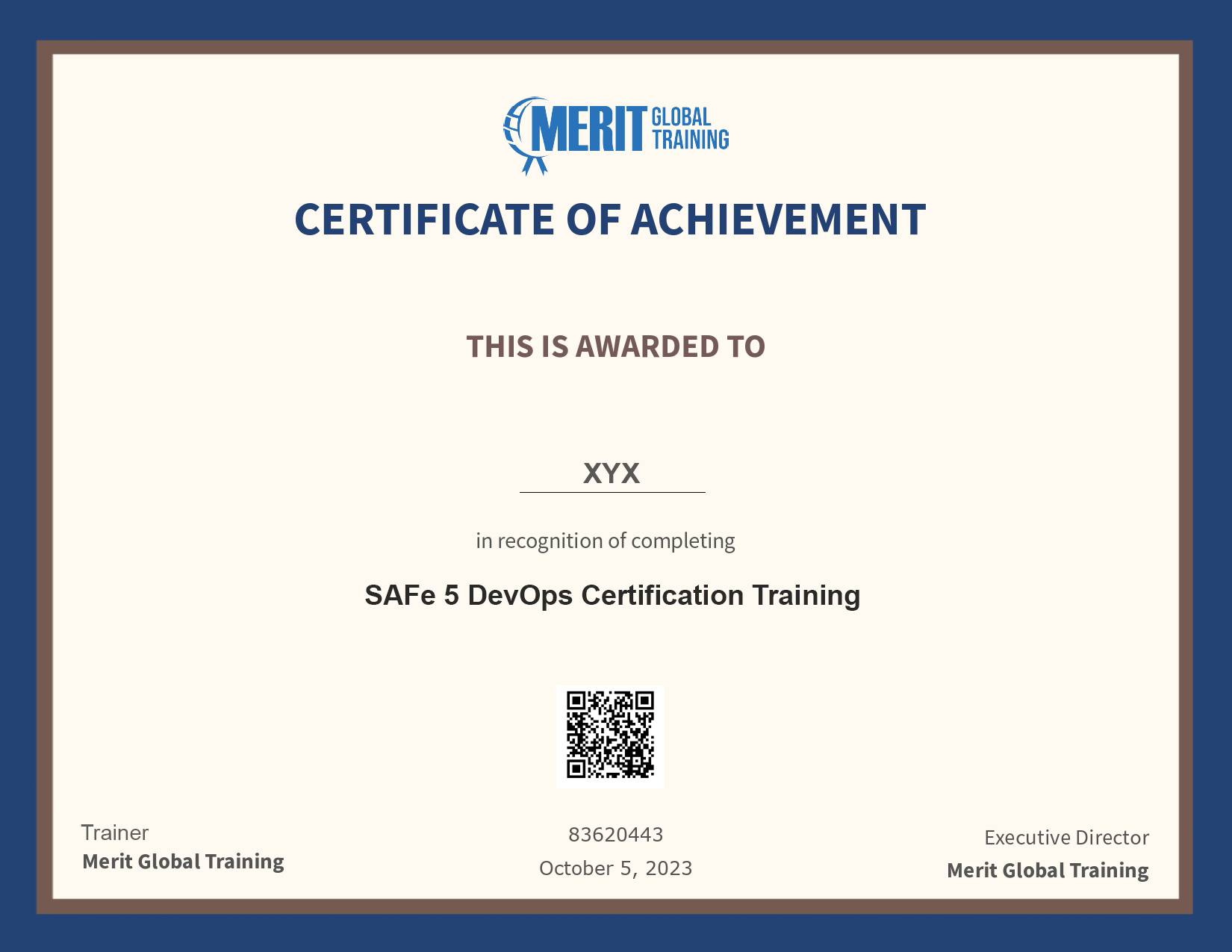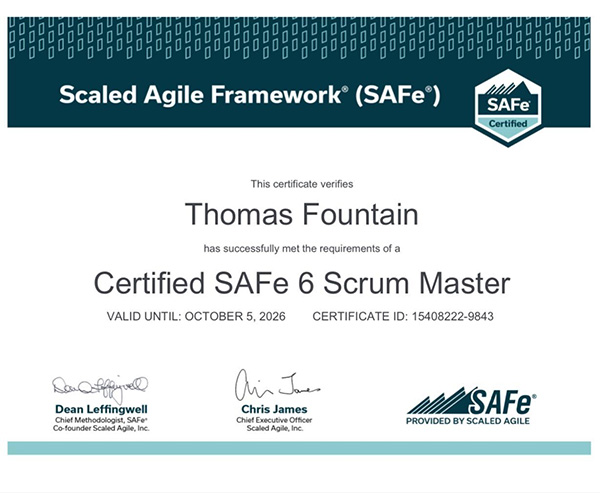Master SAFe For Architects and Boost Your Enterprise Design Abilities
Master SAFe For Architects and Boost Your Enterprise Design Abilities
Blog Article
Master Agile Practices With Comprehensive SAFe Accreditation
In an increasingly complicated service landscape, understanding Nimble methods via comprehensive SAFe certification has become a vital competency for experts intending to enhance organizational performance. This certification not only supplies a deep understanding of the SAFe structure however likewise cultivates vital abilities for promoting collaboration and positioning amongst teams. As companies seek to navigate the obstacles of quick change, the execution of SAFe concepts supplies a pathway to boosted results. Nevertheless, the journey to certification entails greater than simply theoretical expertise; it calls for a strategic strategy to application that can substantially affect business agility. What does this entail?
Recognizing SAFe Structure
The SAFe (Scaled Agile Structure) structure acts as an organized approach for carrying out Dexterous methods at range throughout huge organizations. It gives a comprehensive approach that lines up the various levels of a company, from group to portfolio, guaranteeing that all components work cohesively in the direction of common objectives. SAFe incorporates concepts from Agile, Lean, and product advancement flow, using a well-defined collection of duties, techniques, and roles.
At its core, the SAFe framework comprises 4 degrees: Team, Program, Large Service, and Profile. Each level addresses particular elements of Active distribution, from handling tiny groups of designers to managing multiple programs and straightening critical initiatives with company goals.
SAFe encourages partnership among cross-functional groups, fostering an environment where continuous improvement and development are vital. SAFe Agilist. By stressing alignment, transparency, and integrated high quality, the structure outfits organizations to react swiftly to market changes while delivering worth to consumers
Additionally, SAFe supports different approaches, such as Scrum and Kanban, allowing companies to customize their technique according to specific project needs. This flexibility makes SAFe a durable structure for organizations aiming to thrive in a rapidly advancing organization landscape.

Advantages of SAFe Qualification
Frequently searched for in the Agile neighborhood, SAFe qualification uses numerous benefits for organizations and specialists alike. One of the main advantages is the improvement of skills and expertise in executing the Scaled Agile Framework (SAFe), which outfits individuals with the tools essential to drive successful Agile improvements. This accreditation signifies a commitment to professional growth, making candidates a lot more competitive in the task market.
For organizations, having licensed professionals fosters a culture of continual improvement and partnership, essential for adjusting to transforming market needs. It makes it possible for groups to align their collaborate with critical objectives, eventually improving efficiency and efficiency. Firms with a higher proportion of SAFe-certified staff members commonly experience decreased time-to-market and boosted high quality of deliverables.
Additionally, SAFe qualification helps with networking chances with various other Agile practitioners, making it possible for the exchange of best techniques and experiences (Leading SAFe). This collective network can substantially contribute to individual and organizational development. In recap, acquiring SAFe accreditation not only enhances individual capabilities but also reinforces the overall Agile maturity of an organization, causing sustainable success in today's dynamic company setting
Key Elements of SAFe
Building on the advantages of SAFe accreditation, understanding the essential parts of the Scaled Agile Framework is crucial for successfully implementing its principles. The SAFe framework consists of blog four main levels: Group, Program, Large Remedy, and Profile. Each degree addresses various elements of active practices, promoting positioning and delivery throughout the company.
At the Team level, cross-functional teams work collaboratively using Active approaches, such as Scrum or Kanban, to provide step-by-step worth (SAFe Agilist). The Program level focuses on the Agile Release Train (ART), which is a long-lived team of Agile teams that plans, devotes, and performs together. The Huge Remedy level addresses intricate remedies that call for multiple ARTs to operate in performance, guaranteeing sychronisation and assimilation

Preparing for SAFe Qualification
Getting ready for SAFe qualification calls for a tactical technique to guarantee an extensive understanding of the structure. Familiarize yourself with the core concepts and worths of the Scaled Agile Framework (SAFe) Testimonial sources given on the Scaled Agile internet site, including the SAFe structure paperwork, situation studies, and whitepapers, to build a strong structure.
In addition, practice with sample examination concerns to acquaint on your own with the format and types of questions you might experience. Signing up with study hall or discussion forums can help with understanding exchange and provide assistance from fellow candidates.
Applying SAFe in Organizations
Applying the Scaled Agile Structure (SAFe) within organizations necessitates a structured method that lines up teams and procedures towards a typical objective. The successful application of SAFe begins with establishing a clear understanding of its principles, including positioning, openness, and collaboration. Organizations has to first analyze their present procedures and recognize locations for enhancement, ensuring they are all set for the cultural change that SAFe weblink involves.
Training and accreditation for teams help equip participants with the essential skills and understanding to operate effectively within the SAFe framework. This consists of establishing Agile Launch Trains (ARTs), which offer as the backbone for providing worth across the company.
Regular planning sessions, such as Program Increment (PI) planning, need to be performed to synchronize teams and prioritize work. Furthermore, leveraging metrics to measure progress and performance is crucial for continuous improvement. By continually using SAFe principles and practices, organizations can accomplish higher agility, enhance collaboration, and eventually drive better business results. Accepting this framework placements companies to react swiftly to market modifications and customer requirements.
Verdict
In conclusion, mastering Dexterous techniques with comprehensive SAFe qualification significantly boosts specialist capacities and contributes to organizational effectiveness. The knowledge obtained from recognizing the SAFe structure, along with its essential components, boosts and promotes successful transformations cooperation amongst teams.
The SAFe (Scaled Agile Framework) framework serves as a structured method for implementing Agile techniques at range throughout large organizations. One of the key advantages is the improvement of abilities and expertise in applying the Scaled Agile Structure (SAFe), which equips individuals with the tools needed to drive effective Agile improvements. In summary, obtaining SAFe qualification not only boosts individual capacities yet likewise strengthens the total Agile maturity of a company, leading to sustainable success in today's vibrant service setting.
Structure on the benefits of SAFe certification, comprehending the vital components of the Scaled Agile Framework is vital for efficiently applying its principles.Implementing the Scaled Agile Framework (SAFe) within companies requires a structured method that lines up teams and procedures towards a typical goal.
Report this page